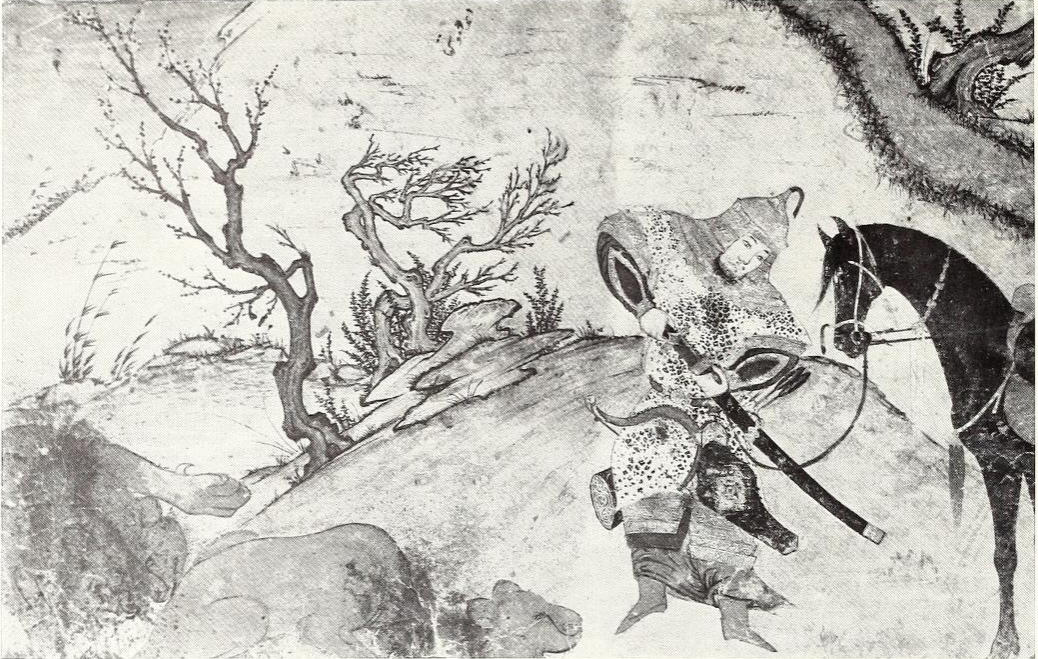Amazon Audible Gift Memberships

Try Amazon Fresh
Isfandiyār Killing Two Lions
Illustrations of Jalayrids from an 14th Century Shahnama
The figures wear contemporary dress or dress of no latter than the date of the illustration.

From the Sarai Albums, Tabriz, 14th century. Hazine 2153, folio 16b Topkapi Sarai Museum.
Isfandiyār Killing Two Lions: Second Stage (fig. 3).
After having killed the wolves, Isfandiyār asks Gurgsār what he will encounter on his next stage.
Gurgsār tells him that he will meet to kill two lions which are so fierce that no crocodile would dare to meet them.
Next morning Isfandiyār goes directly to the lair of two lions, one male and the other female.
He first fights the male lion and cuts off its head. The female now attacks him fiercely; but in the end she, too, is killed.
Isfandiyār is on the right, dominating the scene. His head is inclined to the left.
and he is sheathing his sword. Above his orange boots and blue clothes, we see his gold-colored armor.
Over this he is wearing another coat of mail.
On his head is a gold-plated helmet. The head and forelegs of his horse are visible.
On the left are the two dead lions: one with its head split open; the other with its head cut off.
Isfandiyār is shown with his feet on a beige ground which is separated from the unpainted background by a row of trees.
The horizon is high with the light blue sky showing in the upper left.
In the upper right there is a small brook with bushes on its banks. Its original silver painting is oxidized and dark.
On the far bank the lower trunk of a tree is observed.
On the top of the painting is the name ďAhmad MūsāĒ which was added later.
The first thing we notice when looking at this carefully executed scene is the figure of Isfandiyār.
The brook motif on the right parallels the diagonal line of Isfandiyārís arm.
The completion of the act is understood not only by the dead lions but by the fact that Isfandiyār is sheathing his sword.
The quietly standing horse increases the effect of the scene.
The bent branches of the trees and bushes lend action to the scene by creating an effect of the storm continuing.
Source: "Four Istanbul Albums and Some Fragments from Fourteenth-Century Shah-Namehs" by Nurhan Atasoy, pp. 19-48 in Ars orientalis; the arts of Islam and the East Vol. 8 (1970)
Back to Illustrations of Jalayrid Mongols


